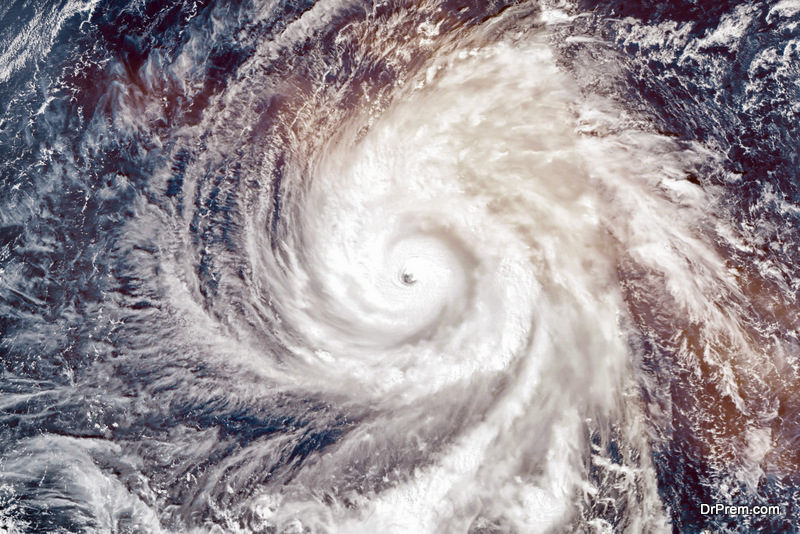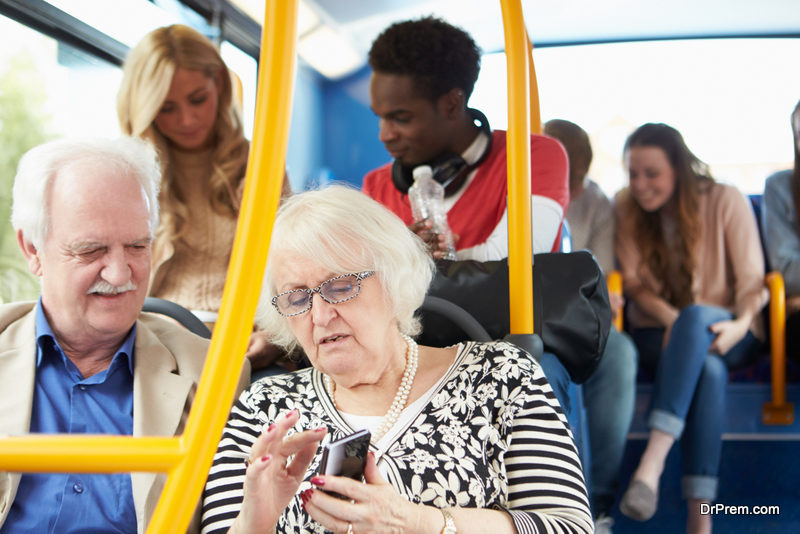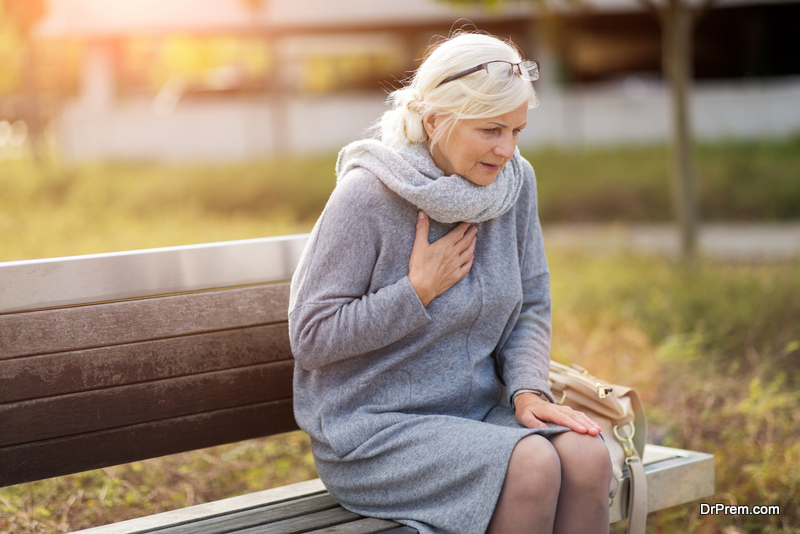Climate change effects are now being felt in many ways. Those who are young and healthy seem to be at less stress whereas children, elderly and poor people are much more vulnerable. Cases of chronic respiratory illnesses are more common. The elderly are more at risk due to their decreased mobility and reduced access to resources which might help them cope with the inclement weather. The risk of climate change on the elderly is more than health risks – they would have to also change their habits to adapt to the hotter climate.
Risk of climate change for the elderly: What are they?
What is the extent of climate change?
 The IPCC was formed in 2007 to evaluate the risk of climate change in the world. The scientific body studies the environmental impact due to climate change caused by human activities. Their findings have indicated that the agricultural practices, fossil fuel use and change in the land use have been the predominant reason for the increase of greenhouse emissions into the atmosphere. These emissions have resulted in global warming with the temperature of the surface rising significantly.
The IPCC was formed in 2007 to evaluate the risk of climate change in the world. The scientific body studies the environmental impact due to climate change caused by human activities. Their findings have indicated that the agricultural practices, fossil fuel use and change in the land use have been the predominant reason for the increase of greenhouse emissions into the atmosphere. These emissions have resulted in global warming with the temperature of the surface rising significantly.
The last eleven years have been the warmest years on record since the year 1850. The sea levels have risen too, at 3.1 mm every year. Drought, unpredictable weather is now a fixture in many parts of the world. The IPCC’s findings have indicated that the environmental impact would be much more noticeable and that the elderly would be at greater risk of climate change.
Why are older adults more vulnerable?
Climate change is associated with extreme weather such as drought, cyclones, severe storms which the elderly would find hard to cope. There are more instances of vector borne diseases. With age, the immunity levels are reduced, so in the case of epidemics following the natural calamities, it has been found that old people are the worst affected. Everything is scarce following any kind of extreme weather – water supplies are decreased and human habitation centers are filled to capacity on first come first served basis. For all of these reasons and more, older people are at risk of climate change.
Senior citizens lack the mobility required to save themselves from life threatening situations. Their movements become slow with age, so they are often the casualties of events such as flash floods, hurricanes and cyclones which occur due to climate change. They are physiologically susceptible as well as social susceptible.
Research also suggests that the effect of climate change can vary from person to person, depending on their pre-exposure to their health status, social characteristics and psychological well-being. So, just being an elderly person does not alone increase the vulnerability to the risk of climate change. The lifestyle, emotional, physical and emotional health of the elderly also contribute to the extent of the damage due to changing weather, and the negative impact can be reduced.
Studies finds older people are at greater risk
 Senior citizens who are aged over 85 years suffer from the negative health problems, says a study by Whitelegg, Haq and Kohler, 2008 because of their physical frailty. The older people who are over the age of 85 years suffer from age related health problems including chronic diseases. They have to take medications which hinder mobility as well as increase susceptibility to vector borne diseases, heat, pollutants and more. This was a finding in the same study of 2008.
Senior citizens who are aged over 85 years suffer from the negative health problems, says a study by Whitelegg, Haq and Kohler, 2008 because of their physical frailty. The older people who are over the age of 85 years suffer from age related health problems including chronic diseases. They have to take medications which hinder mobility as well as increase susceptibility to vector borne diseases, heat, pollutants and more. This was a finding in the same study of 2008.
Senior citizens who have less education and are not well-off would potentially suffer more from inclement weather. Elders have poorer social networks also, thus increasing their risk in times of danger. Social isolation and chronic health problems are particularly problematic, as the study discovered.
Another study conducted in 2008 pointed out that exposure to air pollution and neurotoxins (Stein et al 2008, Cohn and Macphall, 1996) can cause an inflammatory response that is associated to diabetes, cardiovascular disease and other conditions such as Alzheimer’s disease. This is especially true for those who belong to the low socioeconomic strata, as they cannot afford to take the special precautions required. Exposure to pollution, and chemicals such as pesticides for decades, place older people at greater risk of climate change.
Examples of the elderly being affected by climate change
Some natural disasters which occurred due to climate change put the focus on the vulnerability of senior citizens at such times. Most of the deaths which occurred in Hurricane Katrina in 2005 and the Great East Japan Earthquake in 2011, were among the elderly.
This could be due to the fact that the elderly are much less mobile than younger people and cannot escape to safer areas.
Hurricanes
 Climate change would cause instances of extreme weather more frequently. The hurricanes have been increasing in severity with the passing years. Researchers have analyzed the Hurricanes Andrew, the Florida hurricanes in 2004 to 2005, as well as Hurricane Katrina, and their research revealed that exposure to events such as these affect the elderly severely and disproportionately.
Climate change would cause instances of extreme weather more frequently. The hurricanes have been increasing in severity with the passing years. Researchers have analyzed the Hurricanes Andrew, the Florida hurricanes in 2004 to 2005, as well as Hurricane Katrina, and their research revealed that exposure to events such as these affect the elderly severely and disproportionately.
Analysis of spatial-hazards as well as county-level census in the US, showed that older part of the population will be more exposed to hurricanes. They would be at higher risk of climate change in countries such as the US where hurricanes and storms occur and will continue to occur in the coming years.
To help the elderly cope, the government and private welfare organization should take their vulnerability seriously and put in place measures to help them survive. Senior citizens who live in low income neighborhoods are prone to being economically and physically affected by hurricanes. There should be affordable options available for them to relocate permanently or temporarily, to safe areas. The long-term care facilities in these areas are a cause for concern too, as it is difficult to transport all the people in the facilities in times of danger, and people have to be evacuated. The risk of climate change in senior citizens can be decreased by accepting climate change as a reality and planning long term.
Those who suffer physical impairments, have very few social contacts or personal transportation, find it hard to cope. At times of flooding, as seen during Hurricane Katrina, 75% of those were over the age of 60, and 50% of the elderly were above the age of 75. These figures spurred efforts to develop particular approaches to evacuate frail as well as vulnerable people.
Vulnerability to heat wave conditions
The vulnerability due to heat waves depends on the housing structures as well as communities, and the acclimatization to heat over a period of time. Studies in the US and Europe have found that heat related mortality and morbidity occur when extreme heat conditions develop suddenly, without warning. It was found that young children and the elderly were the most likely to suffer. To help them adapt and reduce the risk of climate change, air conditioning in homes and community centers can be viable methods to mitigate severe heat waves.
Underlying health conditions such as cardiovascular diseases, obesity and so on, exacerbate the risks. The social isolation as well as limited income is also associated with the heat related illnesses in heat waves, according to studies done on 2002 and 1995. The psychiatric, cardiovascular and pulmonary conditions can turn fatal during extreme heat, as seen in the 2004 European heatwave.
Interventions to mitigate the effects of the heat wave have to be planned in a way that the elderly are convinced to use those facilities. The cooling shelters have to be planned in a secure way, so that older people feel reassured and confident to use them. Older adults in Chicago did not use the community cooling centers as they feared crime. Thus, to overcome the risk of climate change, a change in the mindset of the elderly has to be initiated, so that they are able to benefit from the various safety measures.
Air Pollution
 Air pollution is a part of the atmosphere changing, and one of the major causes of global warming and climate change. The tropospheric ozone as well as the fine particulates affect older people, especially those who suffer from chronic illness. The Bateson and Schwartz study in 2004 found that the death risk due to high level of particulate matter is increased in the elderly who have lung or heart disease.
Air pollution is a part of the atmosphere changing, and one of the major causes of global warming and climate change. The tropospheric ozone as well as the fine particulates affect older people, especially those who suffer from chronic illness. The Bateson and Schwartz study in 2004 found that the death risk due to high level of particulate matter is increased in the elderly who have lung or heart disease.
The risks due to air pollution increases in those who have history of diabetes or myocardial infarction. The risk due to climate change resulting from black smoke also is much more in older people. Interestingly, another study attributed black smoke for the death of single, older citizens.
Older people find it harder to evacuate
A complication which puts the older population in danger, is that they tend to ignore the warnings to evacuate as much as the young who disregard warnings to evacuate. This was noticed by the study by Smith and McCarty, 2009, that despite the sophisticated warning systems in Florida, the elderly could not or did not leave their homes, and preferred to stay in their own homes. They did not consider that they were at risk of climate change, or found the burden of evacuation overwhelming. For older people, it is very difficult to leave the property which they have bought with their life’s savings, and tended and looked after.
Policy makers have to implement strategies
 Activists have been trying to raise awareness about the perils of pollution since 1970, when the first Earth Day was held. At that time, people came out in protest about the smog. Smog was linked to developmental delays seen in children. Now, awareness has to be increased about the ways in which the older citizens as well as children are affected by climate change.
Activists have been trying to raise awareness about the perils of pollution since 1970, when the first Earth Day was held. At that time, people came out in protest about the smog. Smog was linked to developmental delays seen in children. Now, awareness has to be increased about the ways in which the older citizens as well as children are affected by climate change.
Researchers at York University, Stockholm Environment Institute (SEI), and Simon Fraser University’s Gerontology Research Centre in Canada have called for the better awareness amongst policy makers and the public about the risk of the climate change on ageing populations.
The UN has projected that by the year 2050, almost 25% of global population will be above age 55. Environmental change and older population are two of the key challenges which have to be addressed, to secure an equitable, safe and sustainable future. However, policy makers have yet to pay attention to the impact of climate change on the elderly.
Dr Gary Haq, of the SEI expressed the opinion that senior citizens are very vulnerable to changes in the environment. But both the policy makers and older people themselves lack this awareness, which puts their lives in danger at times of climate change induced natural calamities. The need of the hour is for decision makers at an international level to understand the relation or interaction between the global ageing and the environmental changes to minimize the disproportionate impact.
The report also endeavors to make older people realize their contribution to the environmental change and to protect themselves from the risk of climate change. The report suggests that the wealth, experience and knowledge of the elderly have to be mobilized to address the environmental problems.
How the elderly can be protected from climatic change
Policy makers, the elderly and all the citizens have to work together to reduce the vulnerability of senior citizens to climate change. The following steps can help to mitigate the problem to a certain extent:
Reduce carbon footprint of the elderly
 This can be done by promoting the greener attitudes, individual lifestyle choices and behavior. A greener lifestyle would involve things like ensuring the homes of older people are well-insulated, naturally lit and ventilated with connections to the people around them. Fuel efficiency through green vehicles and public transport can be achieved. The appropriate incentives and infrastructure can help the elderly to adapt to the risk of climate change.
This can be done by promoting the greener attitudes, individual lifestyle choices and behavior. A greener lifestyle would involve things like ensuring the homes of older people are well-insulated, naturally lit and ventilated with connections to the people around them. Fuel efficiency through green vehicles and public transport can be achieved. The appropriate incentives and infrastructure can help the elderly to adapt to the risk of climate change.
Older people should be encouraged to be proactive about climate change by taking part as volunteers and utilizing their knowledge or gaining knowledge about previous environmental changes.
Policy makers globally have to improve the basic infrastructure like sanitation, clean water, health care and social care. Malnutrition and poverty should not contribute to their vulnerability to the effects of climate change which they would have to face in future.



